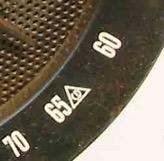EAS Test
One of the big news items this week was the first national Emergency Alert System test ever. Press coverage was mixed. Here is one report that said
“The much-hyped national test of the Emergency Alert System was help Wednesday afternoon and now federal officials are saying the test didn't go exactly as planned. Right after 2 p.m. the Federal Emergency Management Agency initiated the nationwide Emergency Alert System test and now that test is being called a complete failure.”
Broadcasting & Cable took a more nuanced view,
The fallout, as it were, from the FCC's first national test Wednesday appears to be that it worked in most areas of the country, but not in others. Anecdotal reports had the 2 p.m. alert airing on some stations, but not on others, and of varying lengths.
Actually, the issue of what worked and what didn’t really isn’t that important for this initial test. As the Commission said prior to the test,
Although local and state components of the EAS are tested on a weekly and monthly basis, there has never been an end-to-end nationwide test of the system. We need to know that the system will work as intended should public safety officials ever need to send an alert or warning to a large region of the United States. Only a complete, top-down test of the EAS can provide an appropriate diagnosis of the system’s performance.

A major problem of EBS is that it learned the wrong lessons from the 1971 false activation that was caused by a teletype operator inserting the wrong tape for a test. FCC was very embarrassed by this incident although it was entirely the military’s fault and implemented a number of changes in EBS. In my review it became clear that the main impact of these changes was to prevent future false activations even it it greatly reduced the likelihood of EBS working during the Cold War during a real crisis.
A contrived EBS testing program made sure everything looked OK. For example, it is hard to say whether I was more shocked or amused to find out during a visit

I have had nothing to do with EBS or EAS since this 1986 study, but I suspect the my report’s section on testing is relevant today also:
POSSIBLE NEAR TERM IMPROVEMENTS
The purpose of this section is to present possible near term improvements to EBS for further consideration. Only improvements which can be implemented within a year with little or with no out of pocket costs have been considered. ...
In my opinion. the most critical area for improvement deals with the need for realistic exercises. By realistic exercises, I mean nationwide live over the air broadcasts of White House originated test messages (which could be the same text as today's station weekly test message) at random times, without advance industry notification, at least once a year. The only required testing for an individual station is a weekly test at a time of its own choosing during which it broadcasts the EBS alerting signal and a brief test announcement. Participation in quarterly closed circuit tests is voluntary. The week of these tests is announced in advance and the tests always take place during the business day. The television networks have not chosen to participate in these tests although the radio networks do.( However. PBS did participate in one such test.) ...
As was said previously, I do not believe that it is possible to have a high level of confidence in EBS achieving its requirements with the current level of exercises. (For example the current testing program has failed to identify the fact that at least one of the radio network facilities in Washington is not staffed 24 hours/day and has no planned method for transmitting the audio EBS feed through to its headquarters in New York. Since the present closed circuit tests are only done during the normal working day this problem was never observed.)
So the EAS test this week was a long overdue step forward. The actual results are not as important as the lessons learned if the Commission commits to a realistic testing program to assure that the system actually works and continues to undo the wrong lessons learned from the 1971 incident.



![Validate my RSS feed [Valid RSS]](valid-rss-rogers.png)

